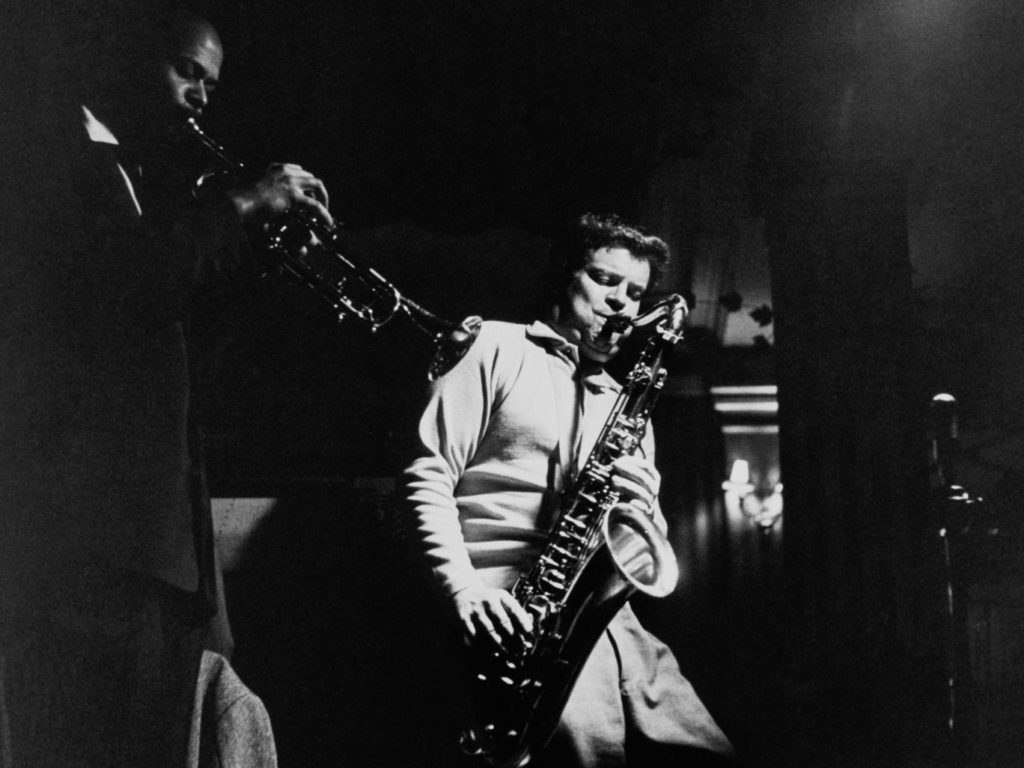‘Every time this guy put a saxophone in his mouth something worthwhile came out’

The sultry chanteuse at the microphone stand, the horn player shrouded in wispy smoke in a darkened room: these are the visuals that speak of jazz. And the tankard of ale? Not so much so. Even less a suburban south Londoner with the ruddy cheeks and portly stature of a butcher’s boy. But “A Pint of Bitter” by Tubby Hayes could yet become a standard, though Tubby has been dead and gone for 42 years.
The tenor saxophonist might be the greatest jazz player you’ve never heard of. Although if you were around in the Sixties, you surely would recall him with his own prime-time television show, when he was Britain’s face of modern jazz. In his time, he played out of his skin in Duke Ellington’s band and blew solo for Ella Fitzgerald. If you’ve watched The Italian Job, and seen Michael Caine and the boys loading minis on to a moving coach, then Tubby played for you too.
But his legacy is about to be more sharply defined. A new documentary film, Tubby Hayes: A Man in a Hurry, is released this month with narration by the actor and Hayes fan Martin Freeman. “Tubby Hayes started everything earlier than most people,” says Freeman explaining why he was drawn to Hayes’s life story. “From a young age he displayed a voracious appetite for life. He burnt the candle at both ends and then started on the middle. A professional jazz musician at just 15, by his untimely death at 38 he had left behind a body of work which has both stood the test of time and has proven to be an inspiration to many like-minded musicians today.”
Hayes might have looked different from the other jazz greats but he ultimately succumbed to the genre’s cruelest cliche, destroyed by heroin like his musical role model Charlie Parker.
The film, written and produced by Mark Baxter and directed by Lee Cogswell, has been executive produced by the musician Paul Weller, another famous admirer of Hayes and the Soho scene he inhabited. “The whole period in London, and Soho in particular, fascinates me,” says Weller. “The new and modern developments in jazz, art, architecture and social mores. The sound of post-war Britain and its youth finding its own feet.”
The documentary has not happened in isolation but is reflective of a growing interest in Hayes’s work among younger music aficionados, as anxious as some of Hayes’s contemporaries to see him get due recognition. The late Ronnie Scott is the most famous name in British jazz, partly because of his Soho club, and it is Ronnie who appears first in the film. “Tubby Hayes. Surely one of the most influential and dominating personalities on the British jazz scene,” he says of his partner in the Jazz Couriers, Britain’s finest modern jazz group.
Tubby cut a remarkable figure in his onstage pomp. With puffed out cheeks, eyes shut, shoulders hunched, he would sink lower and lower as he followed the note. His dress style was the sharp suit and thin tie of the Modernist.
Had things turned out differently for him he would have celebrated his 80th birthday this year. He grew up in Raynes Park, south-west London, with a violinist father, and a mother who had been classically trained as a vocalist. He was five when his father took him to see the music shops of Shaftesbury Avenue and he switched from wanting to follow his dad’s violin playing to choosing to play the saxophone, three of which he’d seen lined up in a window: tenor, alto and baritone. “I knew exactly which one I wanted, I wanted the tenor,” he later told an interviewer.
At school he talked his headmaster into allowing him to wear a fashionable “Boston” haircut, claiming it was his “union card” to enter the clubs he played in the evenings. At 15, he was working professionally and asking Ronnie Scott if he could play alongside him. Scott recalled a “little fat kid” who nearly blew him off stage. “He really was marvellous, even at that age.”
By Ian Burrell from the Independent
Looking for Tubby Hayes on vinyl? Be sure to check eil.com for a handful of Tubby Hayes originals, for full list click here




Be the first to comment